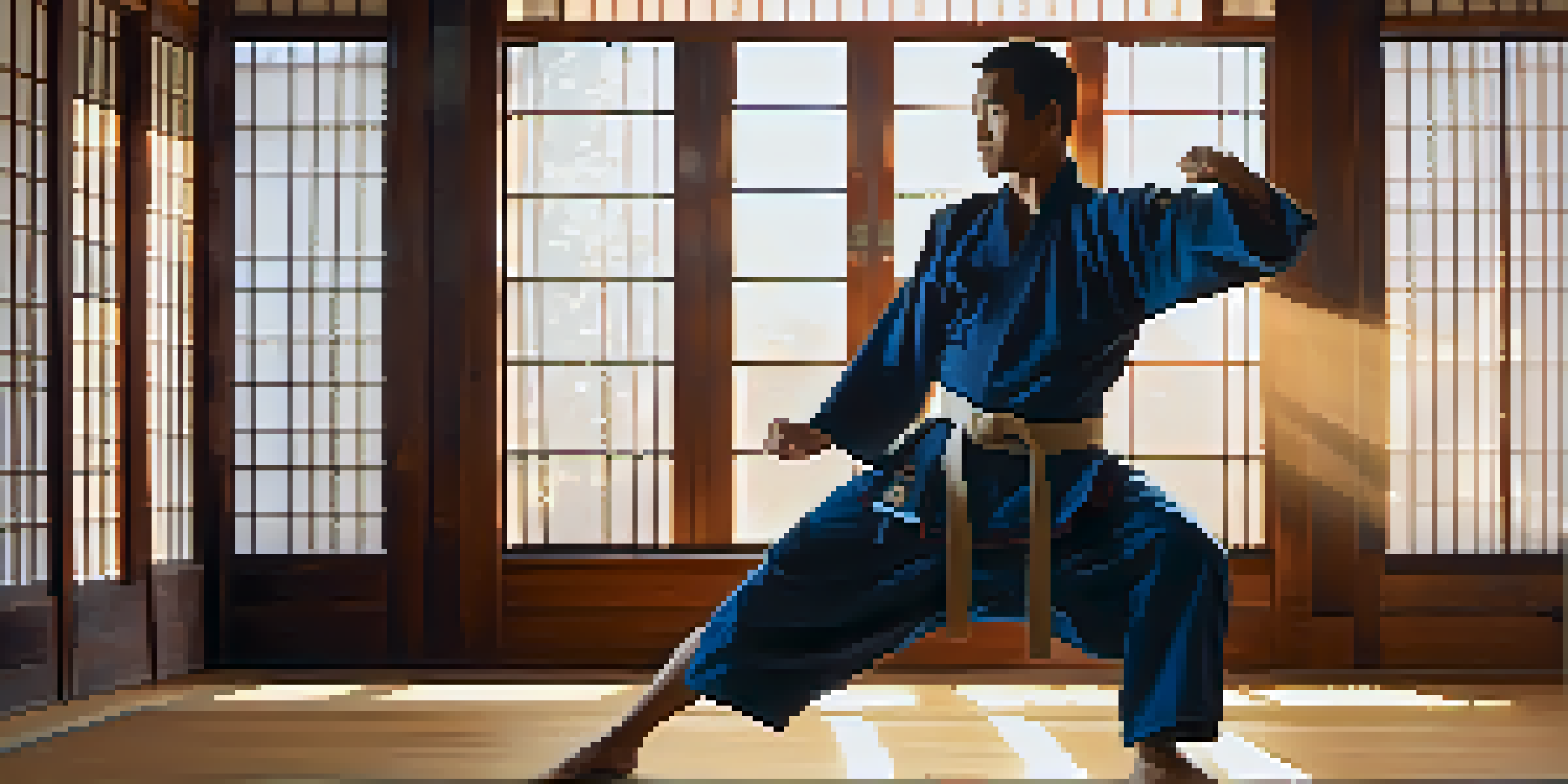The Role of Body Language in Martial Arts and Conflict Avoidance

The Importance of Body Language in Martial Arts
Body language plays a crucial role in martial arts, often communicating more than words ever could. A fighter's stance, gestures, and facial expressions can convey confidence, aggression, or submission, influencing both their own mindset and that of their opponent. Understanding these non-verbal cues allows martial artists to anticipate actions and react accordingly, making body language a powerful tool in training and competition. For instance, a low, open stance may suggest readiness, while a closed posture might indicate hesitation or fear.
Reading Your Opponent: The Art of Interpretation
Being able to read body language is akin to deciphering a secret code in martial arts. A slight twitch or a shift in weight can reveal a lot about an opponent’s intentions and emotional state. For example, if an opponent's shoulders tense, it may indicate they are about to strike or defend. This awareness not only enhances a martial artist's ability to react effectively but also builds a strategic edge during sparring or competitions.
Body Language Enhances Combat Skills
Understanding and interpreting body language can significantly improve a martial artist's ability to anticipate and respond to an opponent's actions.
Using Body Language to Project Confidence
Projecting confidence through body language is essential in martial arts and can deter potential conflicts. Standing tall with shoulders back and head held high sends a clear message of self-assuredness. This confident demeanor can often dissuade aggressors and prevent altercations before they even begin. A well-timed smile or nod can also create a sense of approachability, subtly diffusing tension in a potentially volatile situation.
The Role of Non-Verbal Cues in Conflict Avoidance
Non-verbal cues can be incredibly effective in avoiding conflicts altogether. By maintaining an open posture and relaxed demeanor, individuals can signal their intentions of peace and non-aggression. For instance, avoiding direct eye contact and using soft, open hand gestures can indicate a willingness to negotiate rather than confront. This kind of body language can open doors to dialogue and understanding, steering interactions away from physical confrontations.
Confidence Deters Potential Conflicts
Projecting confidence through body language can prevent aggressive encounters and promote a peaceful environment.
Combining Verbal and Non-Verbal Communication
In martial arts, successful communication is a blend of verbal and non-verbal cues. While words can convey specific instructions or intentions, body language reinforces these messages and adds depth to communication. For example, a martial artist might verbally express a desire to spar while simultaneously adopting a relaxed posture that reassures their partner of a friendly exchange. This synergy between verbal and non-verbal communication fosters better understanding and cooperation.
Training Body Language: Techniques for Practitioners
Martial artists can enhance their understanding of body language through various training techniques. Practicing in front of mirrors allows individuals to observe and refine their own non-verbal cues. Additionally, pairing with partners to role-play different scenarios can build awareness of how body language influences interactions. These training methods not only improve martial skills but also cultivate emotional intelligence—an essential aspect of conflict resolution.
Cultural Awareness Improves Interactions
Recognizing cultural differences in body language is crucial for martial artists as it enhances their adaptability in diverse settings.
Cultural Variations in Body Language and Martial Arts
Different cultures interpret body language uniquely, which is essential for martial artists to understand. What may be considered a sign of aggression in one culture could be viewed as a friendly gesture in another. For example, direct eye contact might be seen as confrontational in some cultures, while in others, it signifies respect and attentiveness. Being aware of these differences can enhance a martial artist's ability to navigate diverse environments, both in training and competition.
The Impact of Body Language on Personal Development
The lessons learned about body language in martial arts extend beyond the dojo, impacting personal development. Understanding how to read and project body language can improve interpersonal relationships and enhance social skills. For instance, a martial artist who practices confident body language may find it easier to assert themselves in everyday situations. Ultimately, mastering body language is not just about fighting; it’s a skill that enriches various aspects of life.